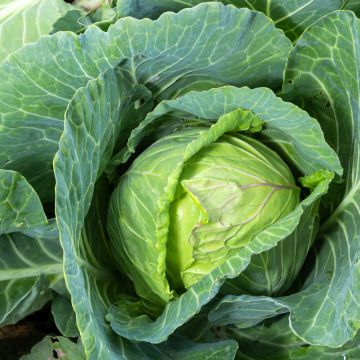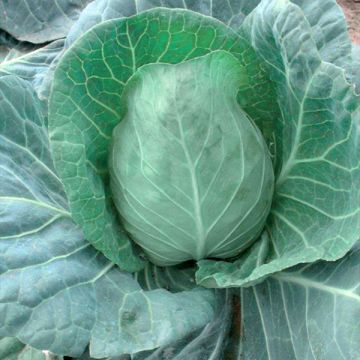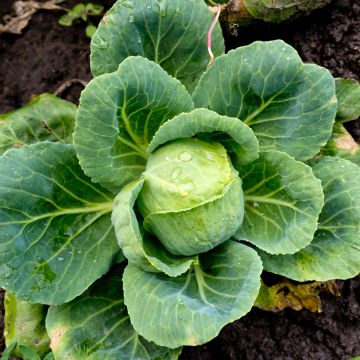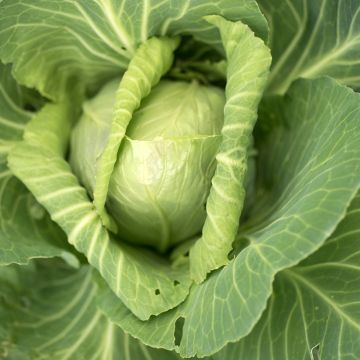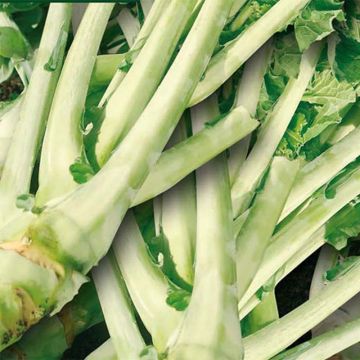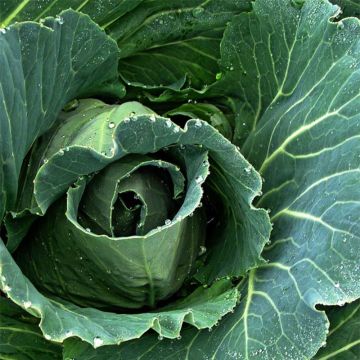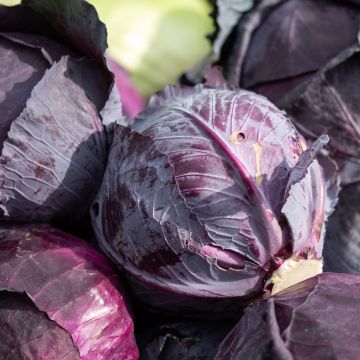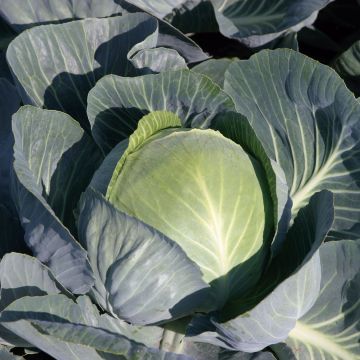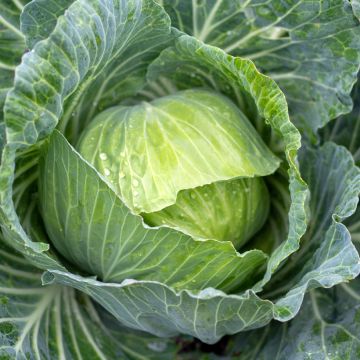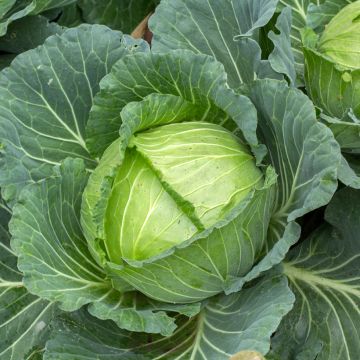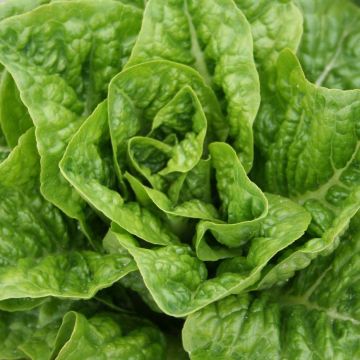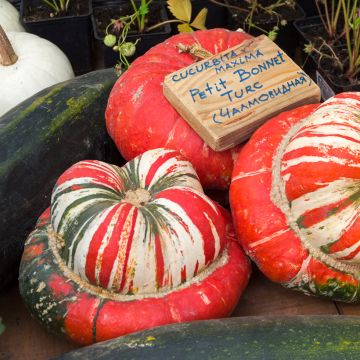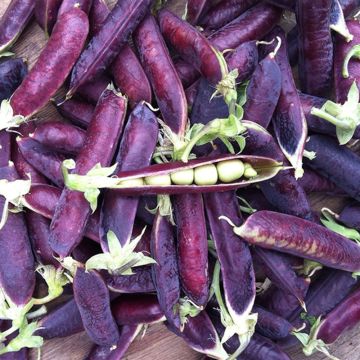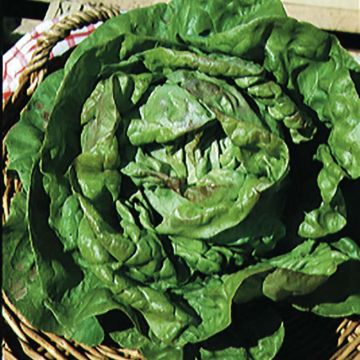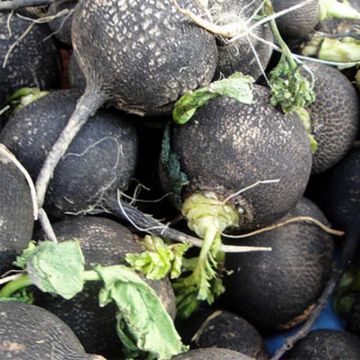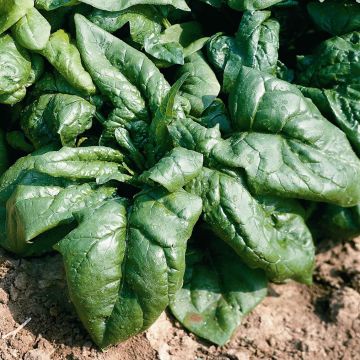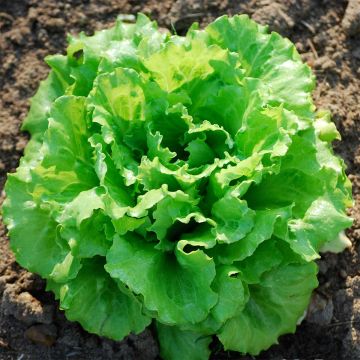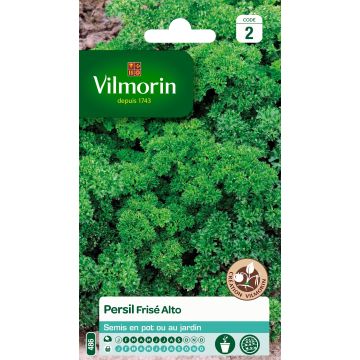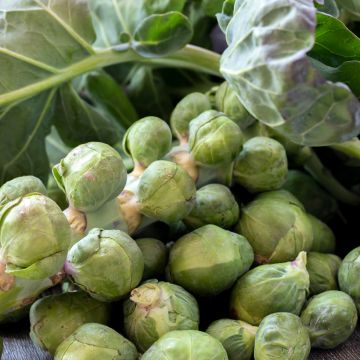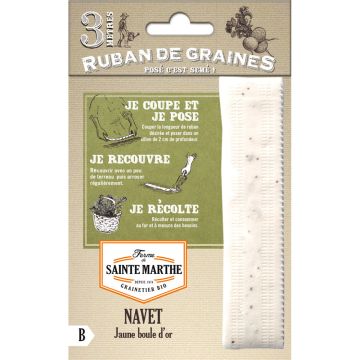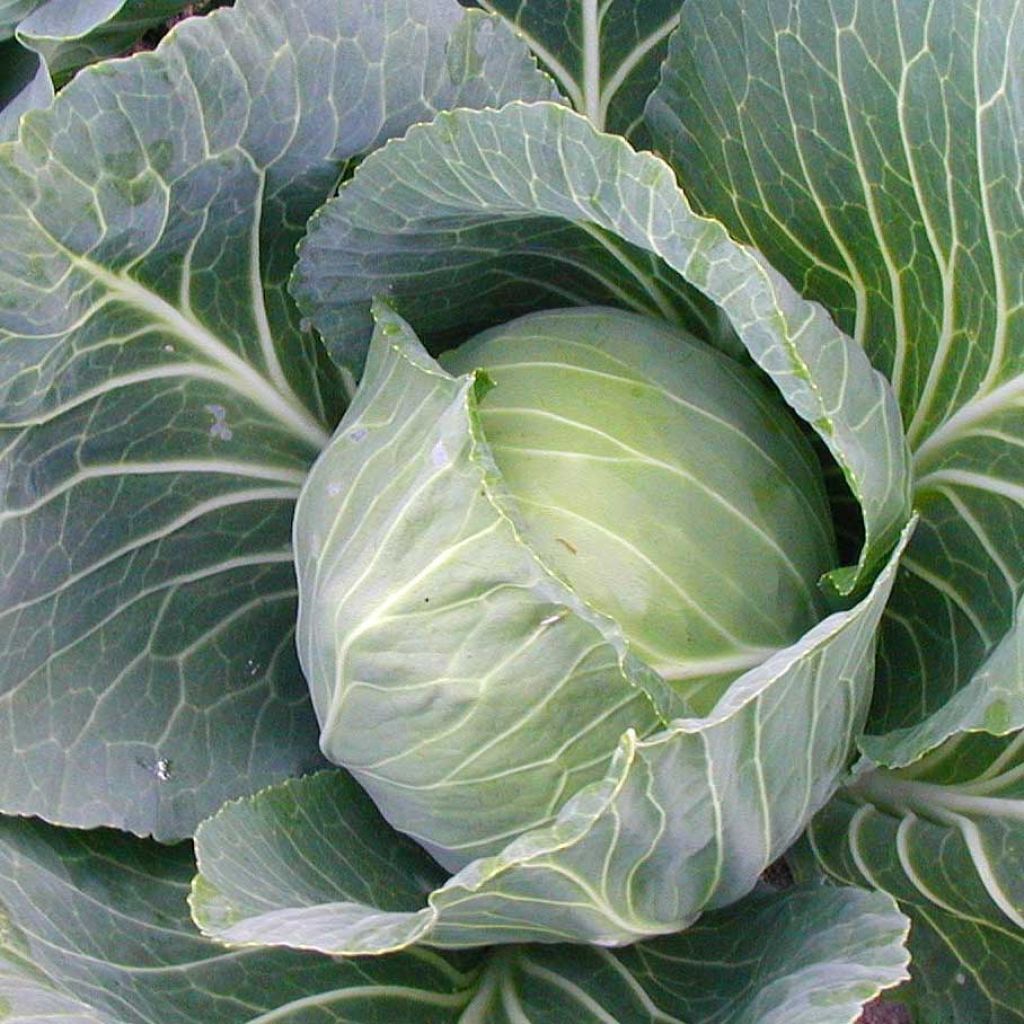

Cabbage Copenhagen Market
Cabbage Copenhagen Market
Brassica oleracea capitata Marché de Copenhague
Pointed cabbage, Hearted cabbage
This item cannot be shipped to the selected country
Dispatch by letter from €3.90
Delivery to Corse prohibited
More information
Schedule delivery date,
and select date in basket
This plant carries a 6 months recovery warranty
More information
We guarantee the quality of our plants for a full growing cycle, and will replace at our expense any plant that fails to recover under normal climatic and planting conditions.
Seed-only orders are dispatched by sealed envelope. The delivery charge for seed-only orders is €3.90.
Delivery to Corse prohibited: UE law prohibits the import of this plant from mainland France to Corse as part of the fight against Xylella fastidiosa. Please accept our sincere apologies.
More information
Description
'Copenhagen Market' cabbage is an excellent quality, popular Danish heirloom. This fast-maturing summer variety produces lovely, round, compact heads of tender leaves (1 to 1.5 kg). Delicious flavour. Sow from February to May for harvests from June to October.
Cabbage or Brassica oleracea capitata is an attractive, popular leaf vegetable belonging to the large Brassicaceae family (ex-Cole family). This native European biennial plant is generally grown as an annual. Its variably tight hearts can be round, slightly flattened or cone-shaped. The smooth leaves come in a great range of colours: from pale green to dark bluish-green, red, white or even purplish-black. An ornamental, mild-flavoured vegetable that is a real must-have in the kitchen garden!
Although cabbage is often thought of as a winter vegetable, it can be sown and harvested virtually all year-round. Varieties are generally grouped into three main categories: spring cabbages (late April to June); summer and autumn cabbages (July to October); and winter cabbages, which planted alongside leeks and parsnips make the long wait until spring more bearable.
Cabbage can be eaten raw, finely shredded in a salad. It is also very tasty cooked: braised to accompany meat and fish dishes, stuffed with meat or rice, or incorporated into soups. It is the main ingredient in sauerkraut. There are lots of fantastic traditional or new recipes to choose from. From a nutritional point of view, cabbage is remarkable: its energy value is low but it is very rich in vitamins C, B6 and B9; it also contains lots of fibre and minerals such as calcium.
Cabbage is an easy vegetable to grow as long as you meet its basic requirements: deep, rich soil, and regular watering. It enjoys plenty of sun and generally does well in cool and rainy climates.
Harvest: Cabbage heads are ready to be harvested when they form a nicely-shaped heart, before the leaves start to turn yellow. With a sharp knife, cut off the stem just below the head.
Storage: Cabbage can be kept for several days in the refrigerator. It also freezes very well after being blanched in boiling salty water. Winter varieties can be left in place until you are ready to use them. Lacto-fermentation (the process used to make sauerkraut) is another tasty way of preserving white autumn varieties.
Good to know: Even if the vegetable garden is first and foremost a place for growing great quality veg, it’s always a good idea to leave a bit of room for flowers. Growing flowers alongside your vegetable plants will make your general gardening experience more enjoyable and is a great way to attract pollinators and repel garden pests! Flowers such as gaillardia, marigolds, zinnias, cosmos or nasturtiums can be sown in and around the rows of vegetables. Herbs such as dill can be very useful also. Bear in mind that some companion plants self-seed easily and can be a bit invasive (borage, chives, lemon balm etc.)
Report an error about the product description
Harvest
Plant habit
Foliage
Botanical data
Brassica
oleracea
capitata Marché de Copenhague
Brassicaceae
Pointed cabbage, Hearted cabbage
Cultivar or hybrid
Annual
Other White Cabbage
Planting and care
Sowing:
The germination temperature of the Copenhagen Market Cabbage is around 15°C (minimum 10°C, maximum 30°C) and takes 5 to 14 days.
Sowing period: from February to May
Harvest period: from June to October
You can either directly sow the seeds in the ground or prepare seedlings that will be later transplanted to their final location in the garden.
Seedling Preparation: In a shelter from late autumn to late winter or in a nursery in the garden for the rest of the year (according to the recommended sowing period), sow the seeds at a depth of 1 to 2 cm in a good seed compost or fine soil. Lightly cover with soil and remember to keep the substrate moist but not waterlogged.
When the young plants appear strong enough to be handled, transplant them into pots if necessary before planting them in the garden, when there is no longer any risk of frost. During planting, respect the recommended spacing for direct sowing.
Direct Sowing: In properly amended and finely worked soil, make furrows about one or two centimeters deep, spaced 50 centimeters apart. Sow the seeds and cover them with a thin layer of fine soil. When the seedlings are well developed, thin them out, leaving one plant every 50 centimeters approximately.
Cultivation:
Cabbage grows best in full sun. It is a demanding vegetable that requires well-rotted, nitrogen and potassium-rich soil. It is advisable to apply a generous amount of mature compost (about 3/4 kg per m2), by scratching it into the soil to a depth of 5 cm, preferably in autumn, after loosening the soil as you would for any vegetable cultivation. It is not very tolerant of soil pH, which should be between 5.6 and 6.5. In acidic soil, it is necessary to gradually raise the pH by adding calcium in the form of Dolomite or Lime.
It is beneficial to associate cabbage with many other vegetables such as tomatoes, lettuce, etc. However, avoid planting it near other Brassicaceae as well as zucchini, fennel, lamb's lettuce, leeks, and strawberries.
Beware of pests such as Cabbage White Butterfly or Flea Beetles and consider using insect netting. Cabbage is generally susceptible to diseases such as Clubroot, so it is important to practice crop rotation in the plots.
Seedlings
Care
Intended location
This item has not been reviewed yet - be the first to leave a review about it.
Vegetable seeds
Haven't found what you were looking for?
Hardiness is the lowest winter temperature a plant can endure without suffering serious damage or even dying. However, hardiness is affected by location (a sheltered area, such as a patio), protection (winter cover) and soil type (hardiness is improved by well-drained soil).

Photo Sharing Terms & Conditions
In order to encourage gardeners to interact and share their experiences, Promesse de fleurs offers various media enabling content to be uploaded onto its Site - in particular via the ‘Photo sharing’ module.
The User agrees to refrain from:
- Posting any content that is illegal, prejudicial, insulting, racist, inciteful to hatred, revisionist, contrary to public decency, that infringes on privacy or on the privacy rights of third parties, in particular the publicity rights of persons and goods, intellectual property rights, or the right to privacy.
- Submitting content on behalf of a third party;
- Impersonate the identity of a third party and/or publish any personal information about a third party;
In general, the User undertakes to refrain from any unethical behaviour.
All Content (in particular text, comments, files, images, photos, videos, creative works, etc.), which may be subject to property or intellectual property rights, image or other private rights, shall remain the property of the User, subject to the limited rights granted by the terms of the licence granted by Promesse de fleurs as stated below. Users are at liberty to publish or not to publish such Content on the Site, notably via the ‘Photo Sharing’ facility, and accept that this Content shall be made public and freely accessible, notably on the Internet.
Users further acknowledge, undertake to have ,and guarantee that they hold all necessary rights and permissions to publish such material on the Site, in particular with regard to the legislation in force pertaining to any privacy, property, intellectual property, image, or contractual rights, or rights of any other nature. By publishing such Content on the Site, Users acknowledge accepting full liability as publishers of the Content within the meaning of the law, and grant Promesse de fleurs, free of charge, an inclusive, worldwide licence for the said Content for the entire duration of its publication, including all reproduction, representation, up/downloading, displaying, performing, transmission, and storage rights.
Users also grant permission for their name to be linked to the Content and accept that this link may not always be made available.
By engaging in posting material, Users consent to their Content becoming automatically accessible on the Internet, in particular on other sites and/or blogs and/or web pages of the Promesse de fleurs site, including in particular social pages and the Promesse de fleurs catalogue.
Users may secure the removal of entrusted content free of charge by issuing a simple request via our contact form.
The flowering period indicated on our website applies to countries and regions located in USDA zone 8 (France, the United Kingdom, Ireland, the Netherlands, etc.)
It will vary according to where you live:
- In zones 9 to 10 (Italy, Spain, Greece, etc.), flowering will occur about 2 to 4 weeks earlier.
- In zones 6 to 7 (Germany, Poland, Slovenia, and lower mountainous regions), flowering will be delayed by 2 to 3 weeks.
- In zone 5 (Central Europe, Scandinavia), blooming will be delayed by 3 to 5 weeks.
In temperate climates, pruning of spring-flowering shrubs (forsythia, spireas, etc.) should be done just after flowering.
Pruning of summer-flowering shrubs (Indian Lilac, Perovskia, etc.) can be done in winter or spring.
In cold regions as well as with frost-sensitive plants, avoid pruning too early when severe frosts may still occur.
The planting period indicated on our website applies to countries and regions located in USDA zone 8 (France, United Kingdom, Ireland, Netherlands).
It will vary according to where you live:
- In Mediterranean zones (Marseille, Madrid, Milan, etc.), autumn and winter are the best planting periods.
- In continental zones (Strasbourg, Munich, Vienna, etc.), delay planting by 2 to 3 weeks in spring and bring it forward by 2 to 4 weeks in autumn.
- In mountainous regions (the Alps, Pyrenees, Carpathians, etc.), it is best to plant in late spring (May-June) or late summer (August-September).
The harvesting period indicated on our website applies to countries and regions in USDA zone 8 (France, England, Ireland, the Netherlands).
In colder areas (Scandinavia, Poland, Austria...) fruit and vegetable harvests are likely to be delayed by 3-4 weeks.
In warmer areas (Italy, Spain, Greece, etc.), harvesting will probably take place earlier, depending on weather conditions.
The sowing periods indicated on our website apply to countries and regions within USDA Zone 8 (France, UK, Ireland, Netherlands).
In colder areas (Scandinavia, Poland, Austria...), delay any outdoor sowing by 3-4 weeks, or sow under glass.
In warmer climes (Italy, Spain, Greece, etc.), bring outdoor sowing forward by a few weeks.

































